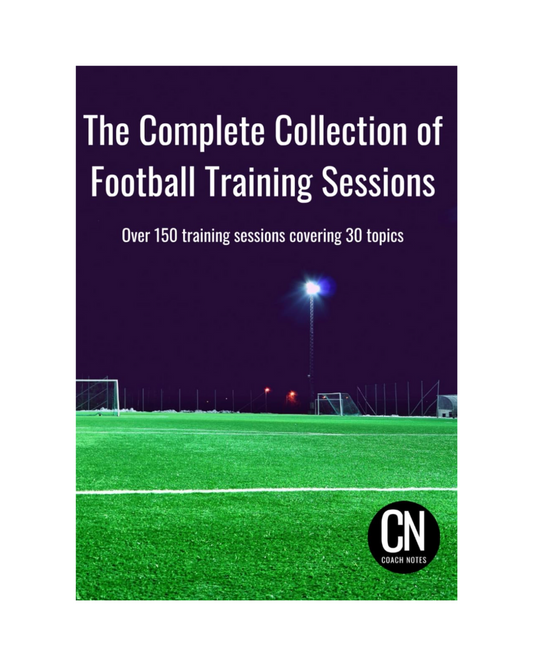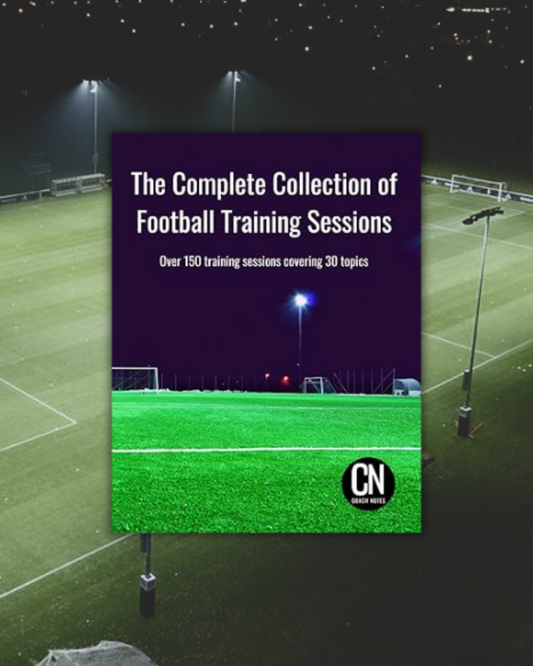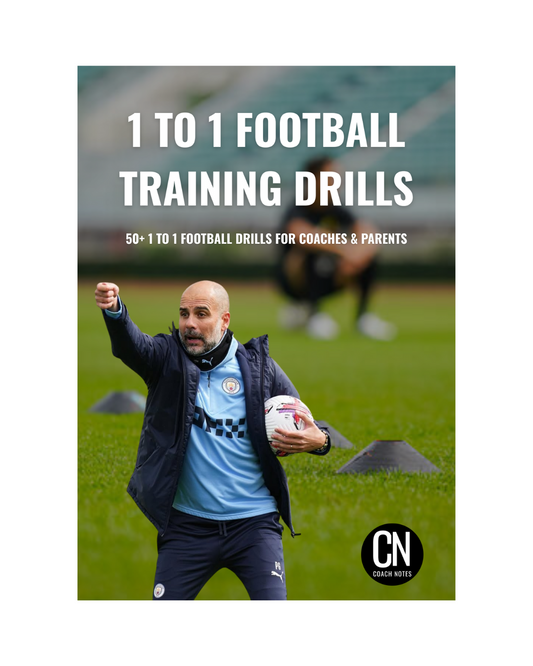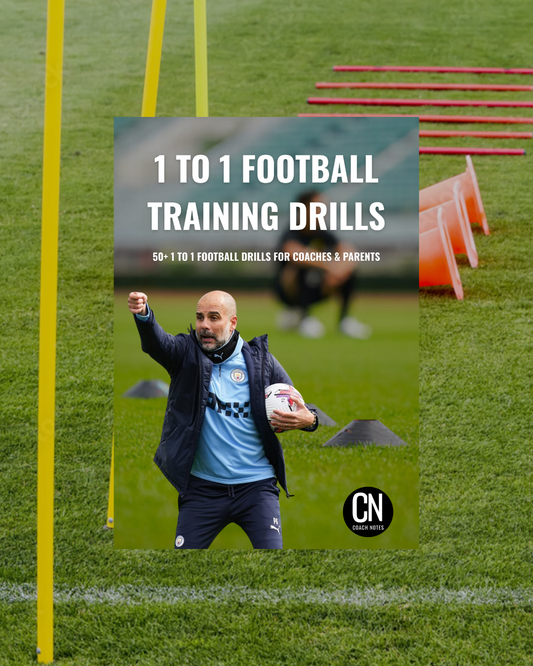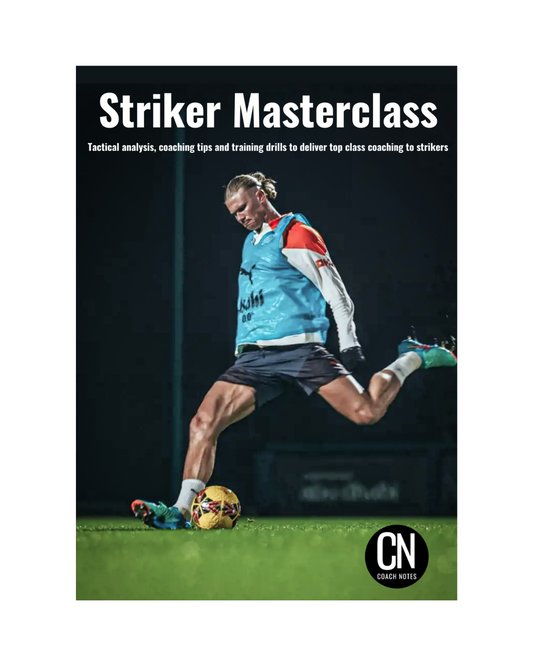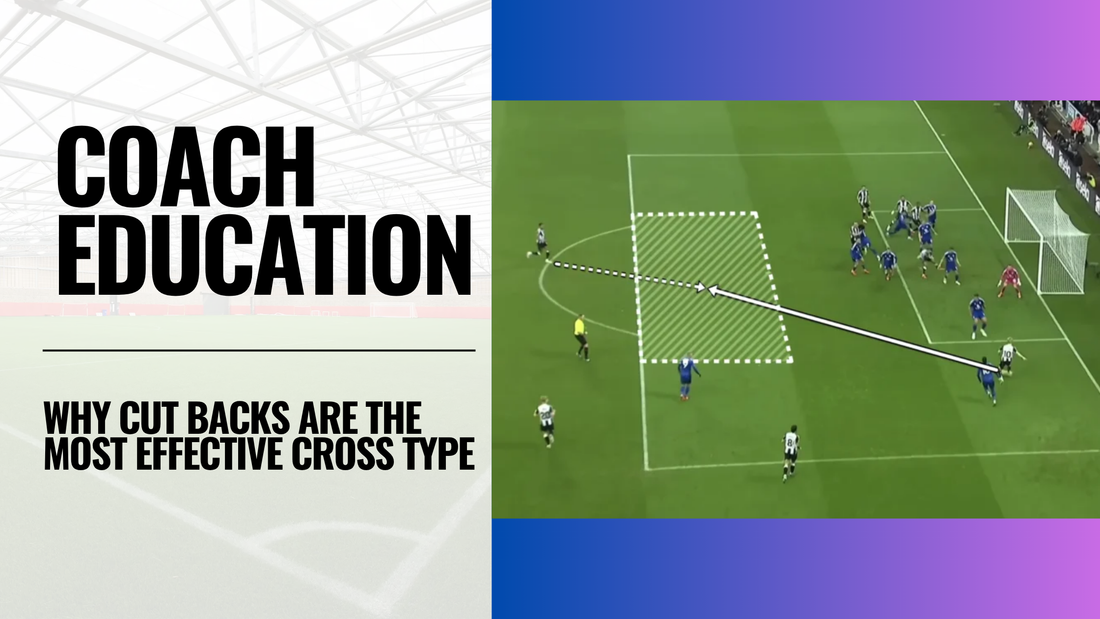
Why Cutbacks Are the Most Effective Cross Type
Share
Modern football has evolved in many ways, but one principle remains clear: the most dangerous attacking chances are created from inside the penalty area, particularly the space between the six-yard box and the penalty spot. This space often called the “Golden Zone”, is where the majority of high-value goals originate.
In this article, we’ll explore why cutbacks are so effective, how to coach them, and how to defend against them.
What Are Cutbacks?
A cutback is a type of cross played from near or just inside the byline, where the ball is passed or driven back towards the edge of the six-yard box or penalty spot. Unlike a traditional floated cross, a cutback aims to find a teammate arriving late into space rather than contesting the ball in the air.

✅ Why Are Cutbacks So Effective?
1. Increased Usage in Modern Football
Data analysis from recent tournaments shows cutbacks are being used more frequently. Top sides like Manchester City, Bayern Munich, and national teams at major competitions consistently use cutbacks as part of their attacking structure.
2. High-Value Shots in the Golden Zone
Cutbacks target the area between the six-yard box and penalty spot – the “Golden Zone”. This area yields the highest chance of scoring because:
- Shots are taken from central positions.
- Goalkeepers are often unsighted or caught shifting across the goal.
- Defenders are facing their own goal and often disorganised.
3. Expected Goals (xG) Insights
Cutbacks consistently produce high xG chances. A ball pulled back from the byline to an attacker running onto it often results in:
- First-time finishes.
- Clear shooting angles.
- Close-range opportunities.
In short, the player receiving a cutback often has both time and space in a dangerous area – something traditional aerial crosses rarely offer.
4. Exploiting Defensive Weakness
Defenders tend to retreat towards their own goal when the ball is wide near the byline, often becoming ‘goal-facing’ and unable to see players arriving behind them. Cutbacks exploit this:
- Players arrive late and unmarked.
- Defenders find it hard to adjust and clear the ball.
- Chaos is created as defenders scramble to track runs.
🪄 How to Coach Cutbacks
To make cutbacks a key part of your team’s attacking strategy, focus on both ball carrier behaviours and receiving player movement.
For the Wide Player (Deliverer of the Cutback):
- Attack the byline: Encourage wingers, wing-backs or wide forwards to drive towards the byline whenever possible.
- Change pace to beat defenders: Use acceleration and tight dribbling to create space for the cross.
- Pick your head up: Teach players to scan the area before cutting the ball back. Avoid aimless passes.
- Deliver with pace: A driven ball back towards the penalty spot is harder to defend than a slow pass.
For the Central Attackers (Receivers):
- Time the run: Players should delay their arrival slightly to avoid running too early and arriving at the byline as the ball is cut back.
- Attack the space between six-yard box and penalty spot: Make this the primary target area for receiving the cutback.
- Late arrival: Midfielders or opposite wingers should arrive late as secondary targets.
🛡️ Defending Against Cutbacks
While coaching attacking cutbacks is crucial, teams must also know how to defend against them effectively.
Defensive Coaching Focus:
- Scan as you defend: Teach defenders to scan behind them while facing their own goal.
- Anticipate the cutback: Encourage defenders to expect the cutback when the ball reaches the byline.
- Stay compact in the box: Overcommitment to the near post can leave space centrally.
- Clear facing forward if possible: When defending a cutback, encourage defenders to clear facing forward rather than attempting awkward clearances towards their own goal.
Communication between centre backs and midfielders is key to tracking late runners and covering central spaces.
⚽️ Training Drills to Use:
👉 Building into the Channel for Box Crossing
👉 Defending the Box - Defending Cutbacks
💭 Summary: Why Cutbacks Should Be Part of Your Coaching Plan
- Cutbacks create the highest-quality scoring chances.
- They exploit defenders facing their own goal and disorganised shapes.
- They target the “Golden Zone” with consistent high-xG outcomes.
- First-time finishes from cutbacks are difficult for goalkeepers to save.
By structuring your wide play and central movements around generating cutback opportunities, you significantly increase your team’s chance of scoring goals.
Top coaches are moving away from floated crosses and aiming for precision cutbacks. Whether you coach grassroots football or academy level, introducing this method into your training will give your players a proven tool for success.


